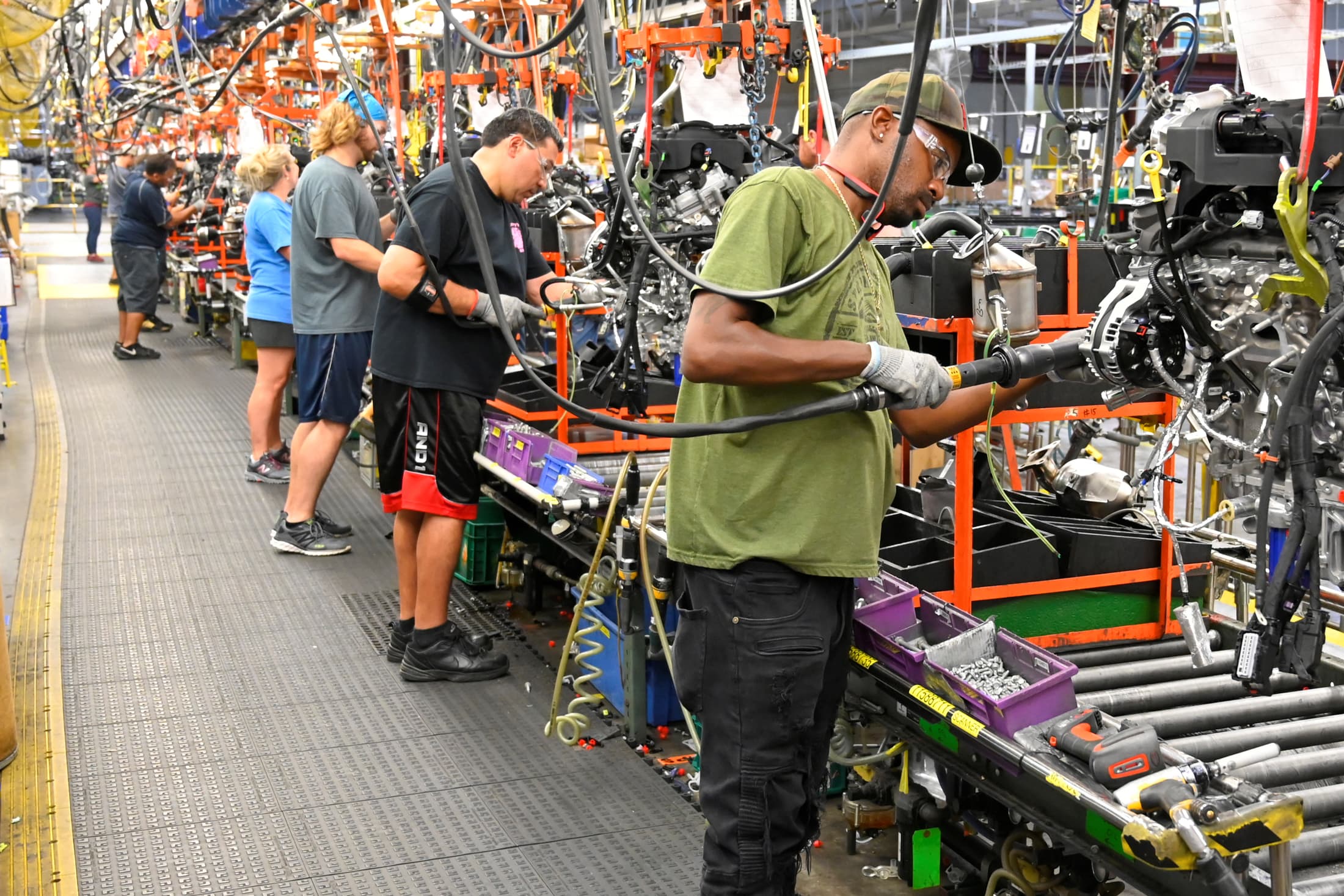
Engines assembled as they make their way through the assembly line at the General Motors (GM) manufacturing plant in Spring Hill, Tennessee, August 22, 2019.
Harrison McClary | Reuters
U.S. productivity rebounded in the final three months of last year but by a smaller amount than initially reported, while labor costs increased at a slower pace than first thought.
The Labor Department said Thursday that productivity grew at a seasonally adjusted annual rate of 1.2% in the fourth quarter. That was down slightly from an initial estimate of a 1.4% gain but still an improvement over a productivity decline of 0.3% in the third quarter.
Labor costs were up at a rate of 0.9% in the fourth quarter, lower than the 1.4% gain reported a month ago, but an acceleration from a tiny 0.2% increase in the third quarter.
For all of 2019, productivity was up 1.9%, the best annual showing in nearly a decade, since a 3.4% gain in 2010.
While the current economic expansion is the longest in U.S. history, now in its 11th year, growth in productivity has lagged significantly, raising concerns about prospects for future gains in living standards. But there is hope that the recent slight productivity uptick may lead to better results in the future.
Productivity, the amount of output per hour of work, is a major ingredient in rising living standards because it allows employers to pay higher wages funded by the increased output.
Rising productivity along with growth in the labour market are also the two factors that determine the economy’s long-run ability to grow. Growth in the gross domestic product has been the slowest in this recovery of any in the post-World War 2 period.
President Donald Trump blamed that weakness on the Obama administration’s failed economic policies but so far, he has not been successful in making significant gains in GDP growth.
The 1.9% productivity gain for the year was up from smaller increases of 1.4% in 2018 and 1.3% in 2017.


 Signal2forex.com - Best Forex robots and signals
Signal2forex.com - Best Forex robots and signals




